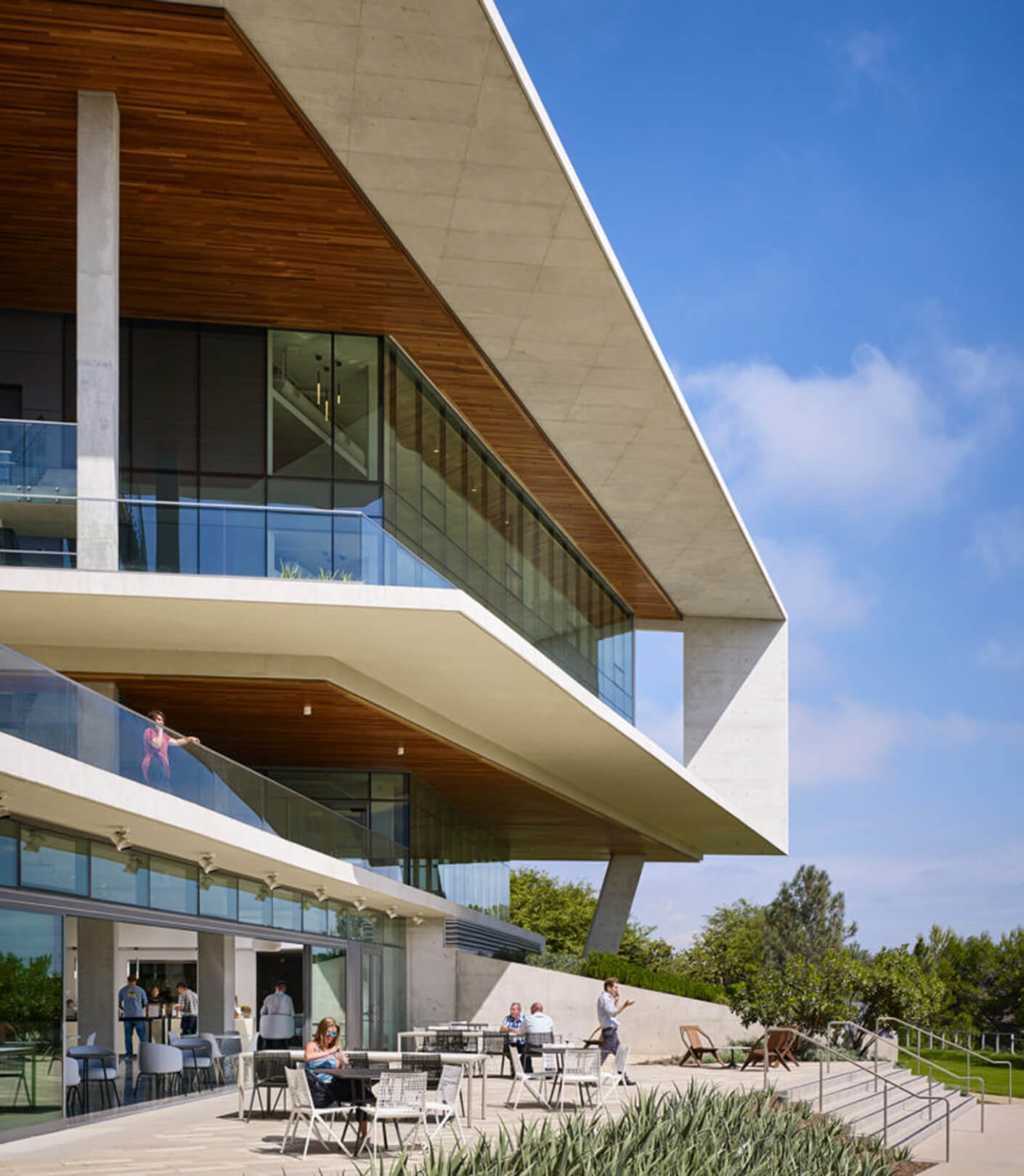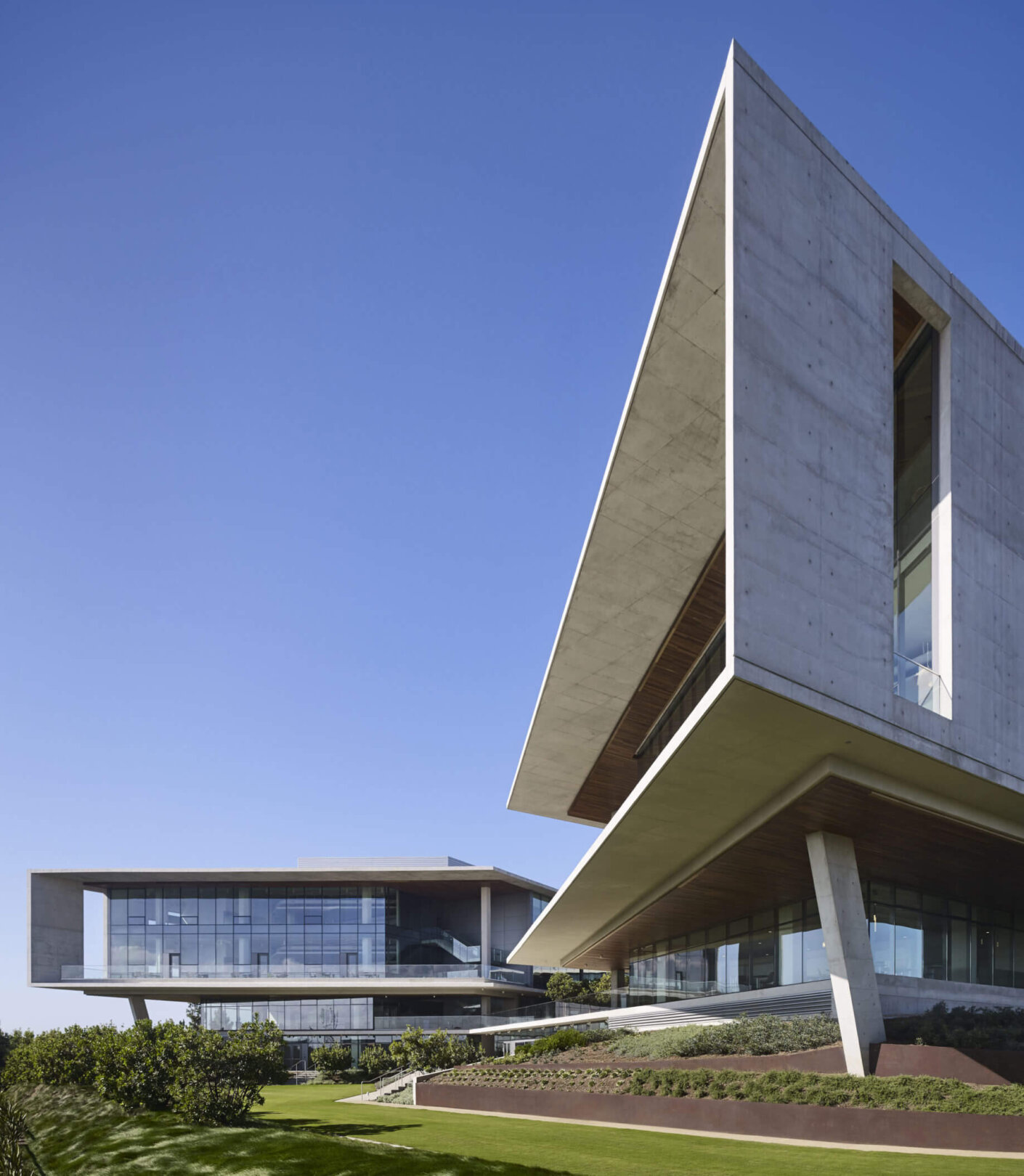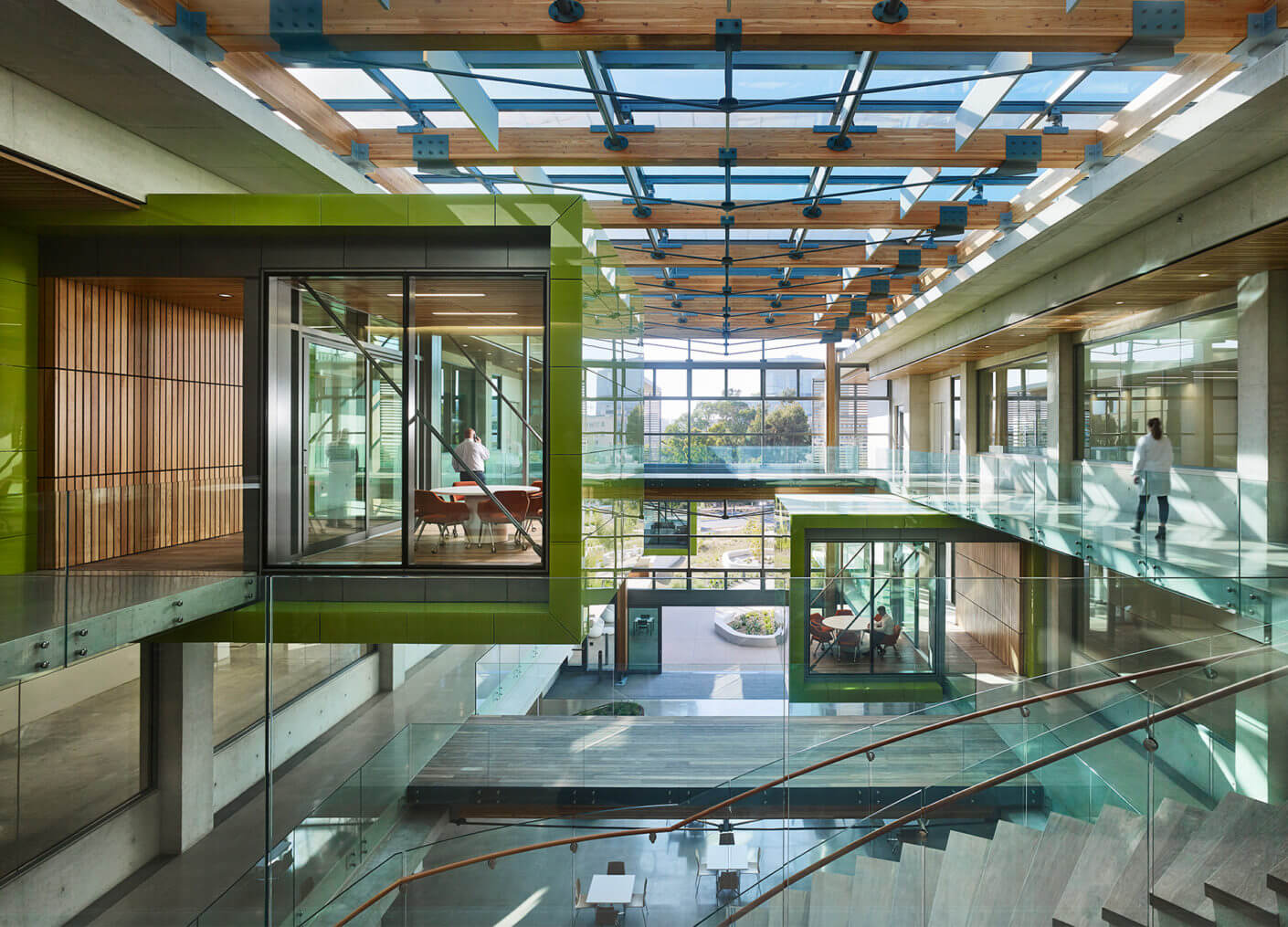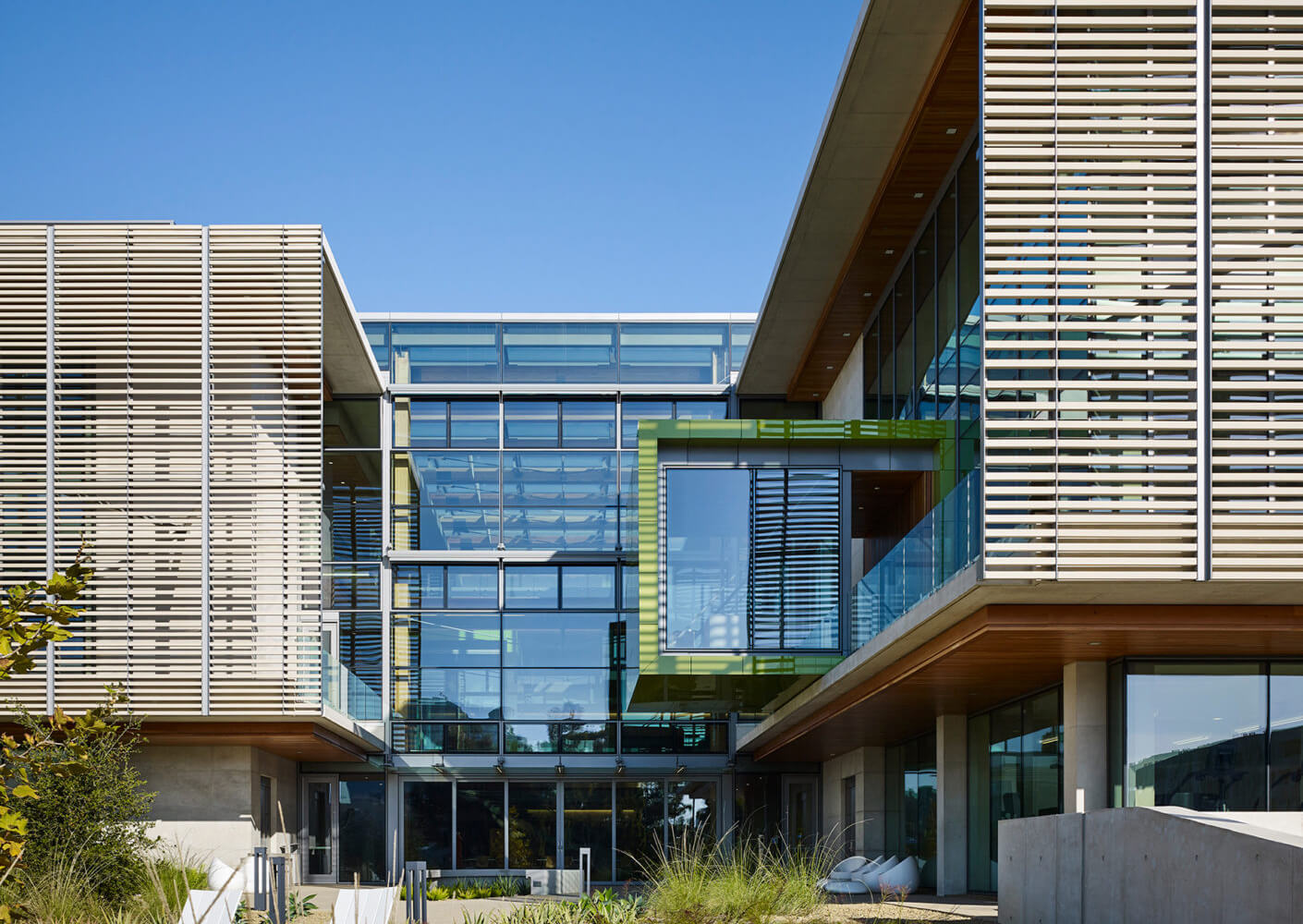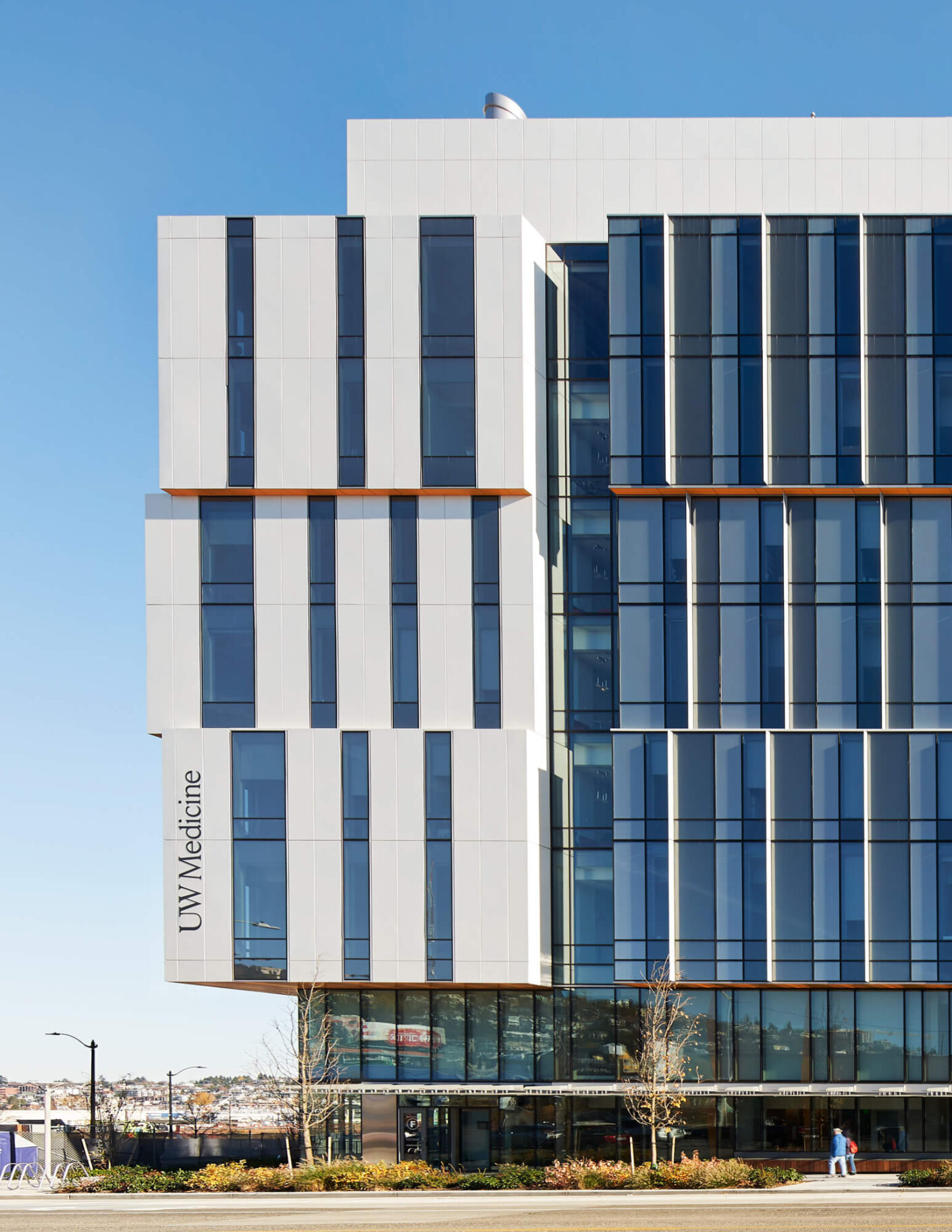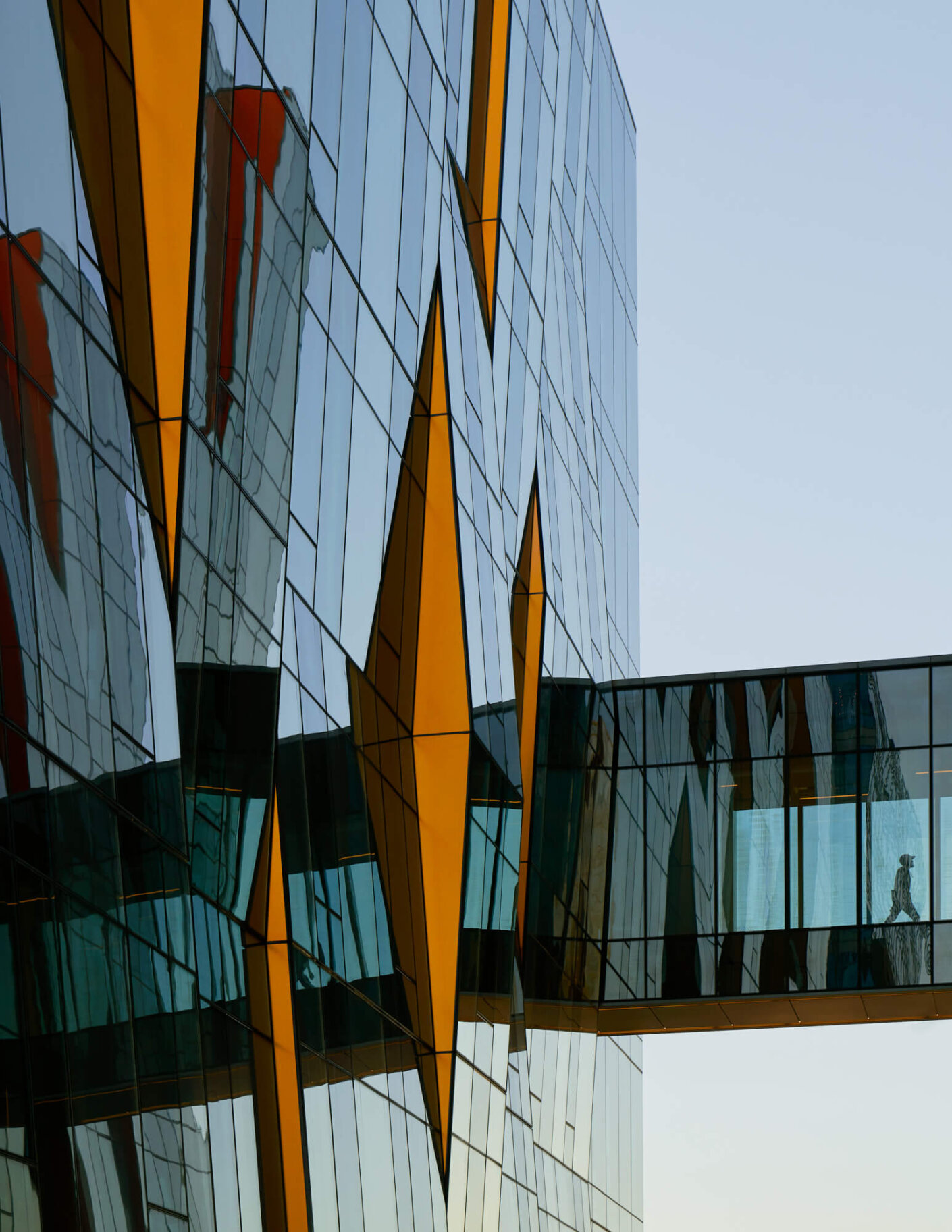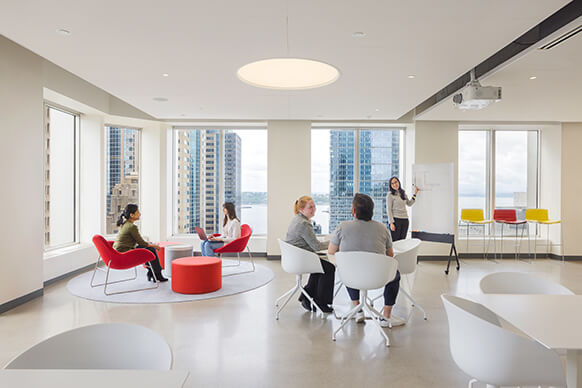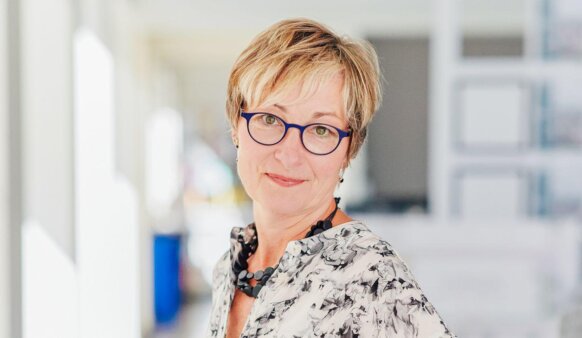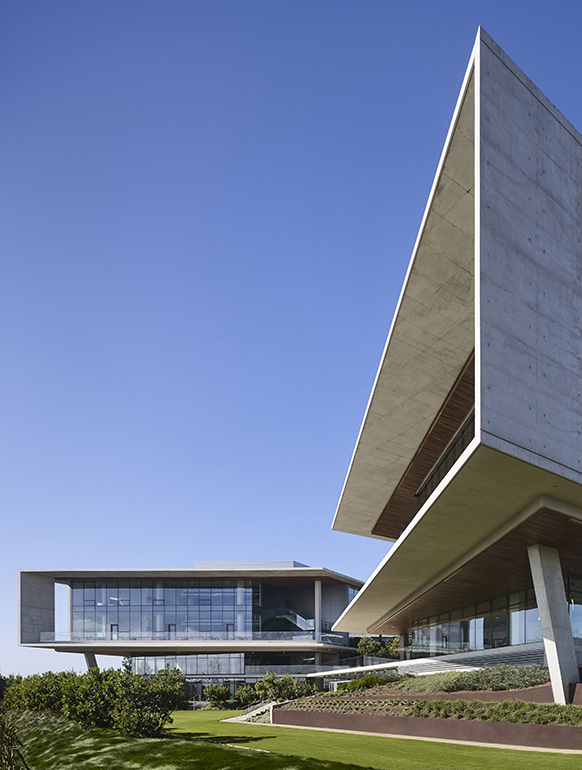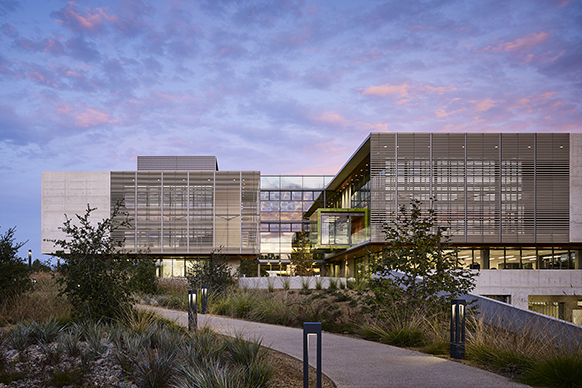The balancing act of meeting technical demands while designing for warmth and welcome at an academic laboratory inspires our U.S. West Coast design duo Ryan Bussard and Kay Kornovich. Based in our Seattle studio, the two have collaborated on dozens of projects that elevate the scientist’s laboratory into a space of calm and beauty. Bussard and Kornovich think outside the box, combining their expertise to go beyond typology and strive for elegance.
“I can’t stress enough the invaluable role that design plays in these spaces, many of which become hubs of life-changing discoveries,” says Kornovich, reflecting on design’s ability to facilitate the mission-critical work of scientists making the world a healthier place. “It’s amazing to know that this is the impact of our design.”
Here’s a brief tour of some of Bussard’s and Kornovich’s most recent laboratory design projects, each of which applies art to science.
Biophilia and Well-Being: I3 Illumina, San Diego, California
Designing for a speculative client, I3 Illumina’s campus in San Diego was envisioned to be a destination for science and tech clients from around the world. “On the West Coast, the unique climate we design for makes its way into all of our projects,” says Bussard. “We take advantage of this at i3 Illumina, a dynamic space that brings together the scientific community around a lush central courtyard.” The greenery is visible throughout the building, whether scientists are catching up in a corridor or clients are visiting an office. The landscape also orients everyone while lending the calm, relaxed feeling of being connected with nature.
Greenspace extends far outside the courtyard as well, as the entire Illumina campus was designed to upend the standard research park paradigm: unimaginative lab and cubicle spaces surrounded by a parking lot. The team’s decision to locate parking underground opened up the site dramatically to uses that are much more dynamic than impervious surface lots. Expansive gardens with trees and walking paths that envelope the building are as much a part of the architecture as they are the labs.
Kevin Tremblay, a member of the BioMed Realty team, quoted after the building’s completion in 2017.
Outdoor Explorations: UCSD Franklin Antonio Hall, San Diego, California
At the University of California, San Diego’s (UCSD) Franklin Antonio Hall, a collaboration with our Houston studio anticipated to open in 2021, Kornovich and Bussard designed a top-tier engineering education facility to bring students and working professionals together. The team took advantage of the site’s access to campus courtyards, creating extensions of the classroom and laboratory, a new typology they call “collaboratories”—a lab that fosters collaboration. “We designed the labs so students could display current projects for peers and passersby to see and interact with.” Here, students and researchers have spaces that allow for the creation of tools and technologies from computer algorithms to advancements in medical equipment.
In the midst of the COVID-19 pandemic, Bussard and Kornovich have also explored how the inherent adaptability of their designs can provide exposure to fresh outdoor air. “While labs are not densely populated like more traditional office spaces, and have air completely replaced by filter systems about once every hour, the most pressing COVID-19 concern for us was flexibility outside the lab itself: For example, designing to take the lab out into fresh air,” says Kornovich.
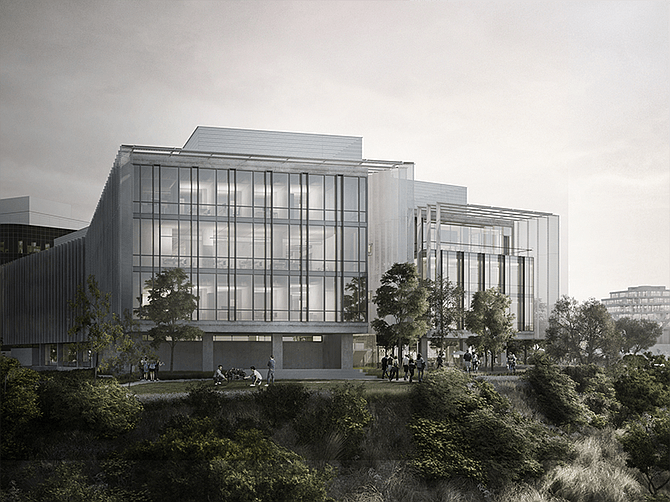
Cross-Collaboration: Center for Novel Therapeutics, San Diego, California
The Center for Novel Therapeutics (CNT) in San Diego, California is a product of the shared vision of the Moores Cancer Center, UCSD, and various cooperative startups. Completed in 2019 and awarded the Malone Grand Orchid Award from the San Diego Architectural Foundation, it became a hub for life science experts from the public, private, and academic sectors, all under one roof. A primary goal was to encourage collaboration. While a standard for commercial laboratories is strict separation of labs and companies for reasons of intellectual property, the CNT was designed so that those privacy concerns could be relaxed while also maintaining project-specific suites. The plan allows researchers to move between commercial and academic labs and encourages the spontaneous innovation and collaboration that scientists thrive on. One of the center’s missions is combatting cancer, and the exchanges made possible by Bussard and Kornovich’s fluid, connective design facilitates discovery within a beautiful, human-centered space.
Texture: The Allen Institute for Brain Science. Seattle, Washington
We understand the importance of incorporating easy-to-clean surfaces in a laboratory setting like the Allen Institute, but while ensuring the highest levels of sanitation, both Kay Kornovich and Erik Mott, the design principal of this project, still look to source materials such as fine hardwoods, and use cool colors—greens and blues, for example—to enrich the experience of the staff and visitors. “There are many spaces in our research complexes that invite texture, color, and touchable materials—they’re comforting and recognizable to people,” Kornovich says. And these material choices make the spaces welcoming and calm. From a dramatic wood “communicating stair” that encourages collisions between researchers, to the bold colors of cantilevered study pods that extend over the atrium, materials and colors foster collaboration at the Allen Institute, creating a visually alluring space that’s as hardworking as its occupants.
An adaptive reuse site, the historic fabric of the building adds context and texture to the work within. Tenants may be working towards breakthroughs in neurology and brain science, yet the Allen Institute’s exterior maintains the industrial story of the neighborhood, while modern interiors offer relaxation and wellness both in and out of the lab. “There’s a humanism to certain materials, a palette that is immediately comforting to all of us,” Kornovich says. “Finding that balance between lab-specific materials and the right textures for gathering and collaborative spaces is key to a successful project.”
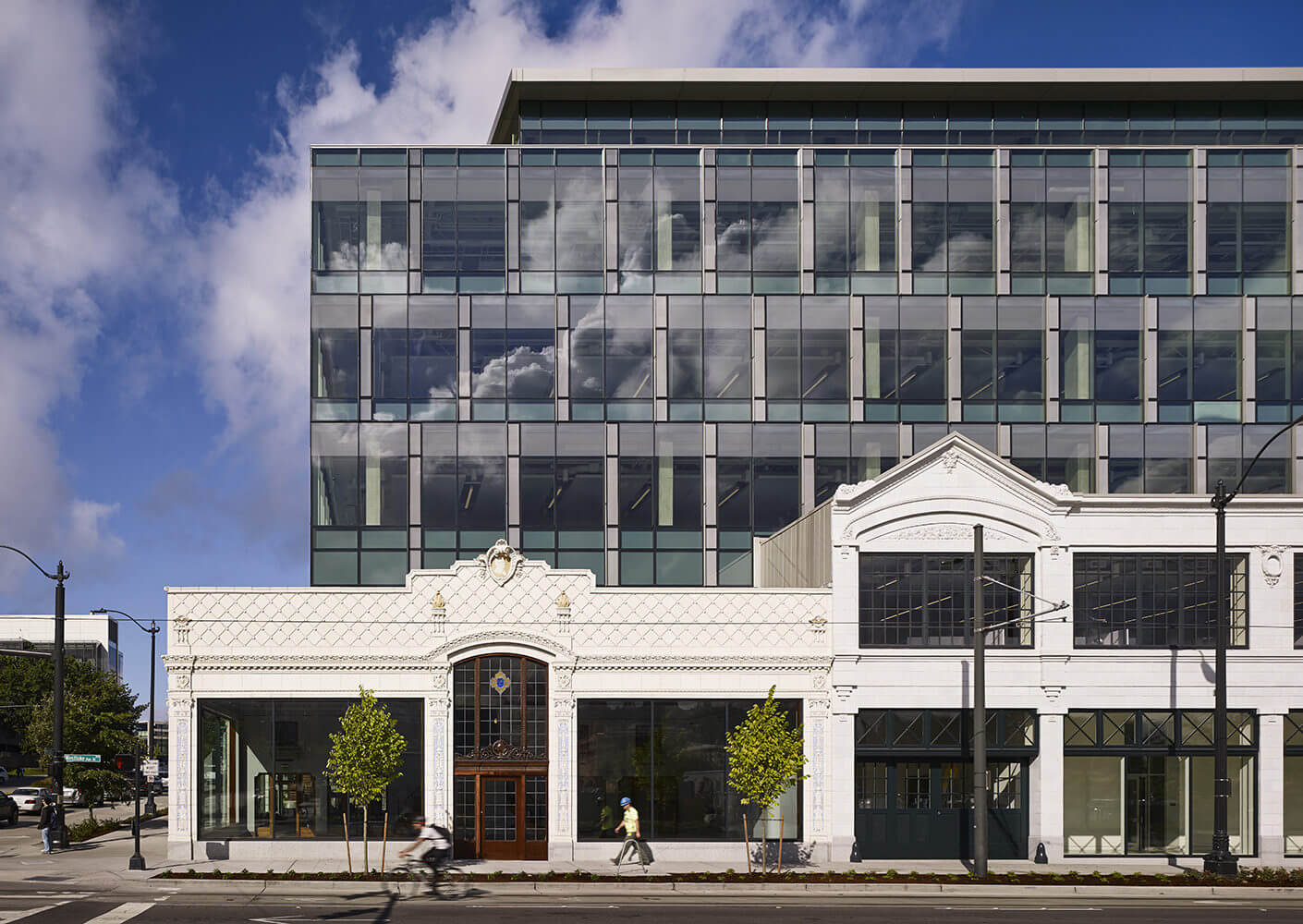
Vertical Connections: UW School of Medicine, Seattle, Washington
In a dense urban setting, it is even more important to design for ease of connection between different departments, floors, and buildings. The University of Washington (UW) medical campus is situated on tight urban blocks, but our team still found solutions that allow for spontaneous collaboration between students, faculty, and scientists.
“The ground floor is open to both the academic community and the city at large. Windows allow views into labs and classrooms, and public cafés welcome all to sit, relax, and connect,” Bussard says, who worked on the campus masterplan. Even though a student may leave their lab for the afternoon, they are welcome to unwind while still on campus. Amidst the buzz of academic activity, the gathering spaces at street level allow for relaxation and discussions among peers.
“High in the sky, there are also several bridges that connect various upper floors and departments, allowing for greater ease of circulation, a very important part of any learning environment,” Bussard adds. While stairs and elevators allow students and researchers to move vertically throughout a building, the bridges go one step further, bringing together separate structures to blur the lines between disciplines. “In a dense setting like the urban campus, creating connections akin to the organic overlaps at street level should be a focus even on upper research floors,” he adds.
Both Bussard and Kornovich credit their success to teamwork with collaborators both inside and outside our Seattle studio. This includes the people who use and experience these beautiful, life-saving laboratories every day. “Everything begins with the vision sessions,” says Kornovich, who loves working with scientists and learning from them with each project. Existing local and scientific communities come together over these projects, seeing them as revitalizations of forgotten spaces or beacons of new opportunity.
The need for laboratory spaces is not going to go away. In fact, we’ve seen the need grow exponentially as our world is facing new, interconnected challenges that require life sciences expertise and leadership. The experience of tinkering with materials, cells, genes, and ideas in a lab space cannot be replicated virtually. Designing for the future, Bussard and Kornovich create spaces that work for both scientists and their ideas: places that support the whole person each step of the way. “When everyone comes together to debate a project’s goals and the ways design will work for them and their communities, we do a lot of listening, and very little talking,” says Kornovich. “We absorb their knowledge and their energy, and we take that with us to the studio and the site each day.”
